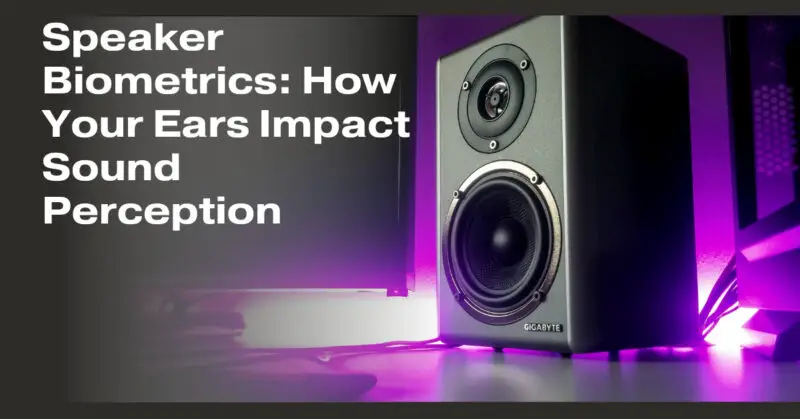When it comes to the way we perceive sound, our ears play a central role. Each person’s ears are unique, and these individual characteristics influence how we hear and interpret audio. This field, often referred to as “speaker biometrics,” explores the relationship between an individual’s ear shape, hearing abilities, and sound perception. In this article, we’ll delve into the fascinating world of speaker biometrics and how it affects our audio experiences.
1. Ear Shape and Sound Localization:
The external structure of our ears, known as the pinnae, plays a crucial role in sound localization. The unique shape of each person’s ears helps us determine the direction from which sound is coming. Here are some key points:
- HRTF (Head-Related Transfer Function): The way sound interacts with the pinnae creates a unique head-related transfer function for each individual. This function helps us determine the elevation, azimuth, and distance of sound sources.
- Sound Filtering: The shape and features of the pinnae, including ridges and flaps, filter incoming sound, affecting how we perceive its frequency content and direction.
- Individual Variability: Due to differences in ear shape and size, sound localization abilities can vary from person to person. This variability can influence how individuals experience audio in a surround sound or immersive sound system.
2. Hearing Sensitivity:
Beyond ear shape, individual differences in hearing sensitivity also contribute to speaker biometrics:
- Frequency Response: Each person’s hearing sensitivity varies across the audible frequency spectrum. Some may be more sensitive to high frequencies, while others have better low-frequency perception.
- Hearing Loss: Hearing impairments or age-related hearing loss can significantly impact how individuals perceive sound. Adjustments in audio equalization may be needed to compensate for hearing deficiencies.
- Audiograms: Audiograms, which measure an individual’s hearing thresholds at different frequencies, provide valuable insights into an individual’s hearing abilities.
3. Speaker Biometrics Applications:
Understanding the role of speaker biometrics has several practical applications:
- Customized Sound Profiles: Speaker manufacturers and audio engineers can use biometric data to create customized sound profiles tailored to individual listeners.
- Virtual Reality and Gaming: In VR and gaming applications, incorporating speaker biometrics can enhance the sense of immersion by accurately simulating sound localization based on the user’s ear shape and hearing abilities.
- Hearing Aid Calibration: Hearing aids can benefit from speaker biometrics to provide personalized sound amplification and correction for hearing impairments.
4. Challenges and Considerations:
While speaker biometrics hold promise for enhancing sound experiences, several challenges must be addressed:
- Data Collection: Gathering accurate biometric data can be time-consuming and may require specialized equipment, such as 3D ear scanners.
- Privacy Concerns: Collecting biometric data raises privacy concerns, and users must consent to the collection and use of their data.
- Processing Power: Real-time processing of biometric data for sound customization in consumer devices may require substantial computing power.
5. The Future of Speaker Biometrics:
As technology advances, we can expect further integration of speaker biometrics into audio systems, especially in applications like virtual reality, gaming, hearing aids, and personalized audio products. The ability to tailor sound experiences to individual ear characteristics and hearing abilities holds the potential to revolutionize how we perceive and enjoy audio in various contexts.


